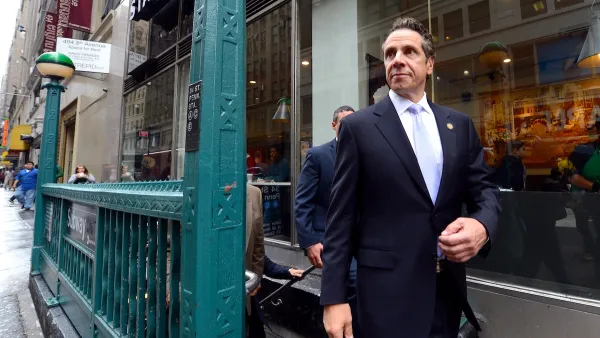Aaron M. Renn looks at Chicago's struggles over the last decade - one that saw the city "increasingly falling behind its large urban brethren" - and asks whether its aspirations for becoming a global city are delusional.
Following a decade that saw the city "experiencing a steep decline quite different from that of many other large cities," including rapid population decline and the highest percentage of job loses amongst the country's ten largest metro areas, Renn lays out the "host of challenges" for new mayor Rahm Emanuel.
According to Renn, the primary challenge may be one of unrealistic aspirations. "Many of Chicago's woes derive from the way it has thrown itself into being a 'global city' and the uncomfortable fact that its enthusiasm may be delusional."
"Chicago as a whole is less a global city than the unofficial capital of the Midwest, and its economy may still be more tied to that troubled region than it would like to admit. Like the Midwest generally, parts of Chicago suffer from a legacy of deindustrialization: blighted neighborhoods, few jobs, a lack of investment, and persistent poverty."
Renn concludes by suggesting how the city can begin to dig itself out of its current predicament: by focusing on areas such as tackling the city's fiscal crisis, improving the business climate, and changing the political culture.
"Fixing Chicago will be a big, difficult project, but it's necessary. The city's sparkling core may continue to shine, and magazines may continue to applaud the global city on Lake Michigan-but without a major change in direction, Chicago can expect to see still more people and jobs fleeing for more hospitable locales."
FULL STORY: The Second-Rate City?

Planetizen Federal Action Tracker
A weekly monitor of how Trump’s orders and actions are impacting planners and planning in America.

Maui's Vacation Rental Debate Turns Ugly
Verbal attacks, misinformation campaigns and fistfights plague a high-stakes debate to convert thousands of vacation rentals into long-term housing.

Cuomo Is the Candidate of Both NIMBYs and Developers. What Gives?
In the New York City mayoral race, odd bedfellows align to preserve the housing status quo.

San Antonio and Austin are Fusing Into one Massive Megaregion
The region spanning the two central Texas cities is growing fast, posing challenges for local infrastructure and water supplies.

Charlottesville Temporarily Has No Zoning Code
A judge ordered the Virginia city to throw out its newly revised zoning code, leaving permitting for new development in legal limbo.

In California Battle of Housing vs. Environment, Housing Just Won
A new state law significantly limits the power of CEQA, an environmental review law that served as a powerful tool for blocking new development.
Urban Design for Planners 1: Software Tools
This six-course series explores essential urban design concepts using open source software and equips planners with the tools they need to participate fully in the urban design process.
Planning for Universal Design
Learn the tools for implementing Universal Design in planning regulations.
Heyer Gruel & Associates PA
JM Goldson LLC
Custer County Colorado
City of Camden Redevelopment Agency
City of Astoria
Transportation Research & Education Center (TREC) at Portland State University
Jefferson Parish Government
Camden Redevelopment Agency
City of Claremont




























